Orthognathic bite

Bite is the nature of the relationship between the teeth of the upper and lower dentition when they are closed.
A bite is considered correct (physiological) if it ensures the full functioning of the dentition.
An ideal option for a proper bite is an orthognathic bite.
"Orthognathia", literally, translated from ancient Greek, means "the correct upper jaw."
Characteristic
Signs of orthognathic bite:
- Upper and lower dental arches of the correct form. The upper dental arch, slightly moving forward, overlaps the lower.
- The front incisors of the upper row overlap the lower ones by 2-3 mm. Moreover, there is a clear contact between them.
- The presence of closure between the remaining upper and lower teeth.
- The teeth have a slight inclination in the direction of the oral cavity.
- The midline of the face passes between the upper and lower central incisors.
- There is no crowding of teeth or spaces between them.
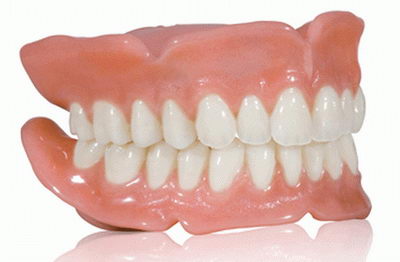
Why it's important to have the right bite
Many people begin to worry about bite problems only at the moment when uneven teeth cause a feeling of psychological discomfort.
The presence of a physiological orthognathic bite ensures both aesthetics of the appearance and human health.
- If a person has each tooth in its place, there is a clear distribution of the chewing load, clarity of diction is ensured, and a beautiful smile is formed.
- Smooth, correctly located teeth are able to chew food properly, and therefore, there are no factors contributing to the occurrence of digestive system diseases.
- With the correct arrangement of teeth, it is easier to carry out hygienic care for them. A well-groomed teeth, as a rule, stay healthy longer.
Video: “The consequences of malocclusion”
Prevention of malocclusion
Active development of the dentition begins immediately after the birth of the child. And if you do not pay due attention to this, then you can not avoid the development of serious anomalies.
To ensure the formation of an orthognathic bite, the following rules must be observed:
- After birth, the baby should be on physiological breastfeeding. If it is impossible to maintain physiological feeding of the baby, it is important to monitor the position of the bottle during feeding. It should be at a right angle and not press on the lower jaw of the child, and the hole in the nipple should not be large.
- It is not recommended to abuse the use of soothers. You should not give her child more than six hours a day, and when the child is sleeping, it is advisable to remove it from the mouth. At the age of 10-15 months, the child must be completely weaned from the dummy.
- When a child reaches the age of two, it is necessary to deliberately wean him from bad habits: sucking fingers, toys, biting his lips, etc.
- During the sleep of the child, it is important to monitor his position in bed. Do not allow the baby's head to be pressed or tilted during sleep.
- Ensure that the child does not breathe through the mouth. If this happens, then you must immediately show the baby an ENT specialist to a doctor who will prescribe adequate treatment.
- It is necessary to timely treat diseases of ENT organs.
- After the milk bite is formed, the child must be transferred to the nutrition of more rigid foods in order to ensure the proper functioning of the chewing apparatus.
- Proper and timely prevention of diseases that cause a violation in the body of calcium metabolism is important. Among these diseases, rickets, tuberculosis, as well as those whose symptoms are dyspepsia.
- During the period of a replacement bite, it is important to pay due attention to oral hygiene, to visit a dentist in a timely manner and to treat problem teeth.
- An equally important factor in the development of an orthognathic bite is the correct posture of the child. Therefore, the prevention of scoliosis during the formation of a bite should be one of the components of maintaining its health.
Photo: before and after
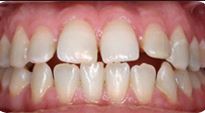 |
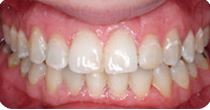 |
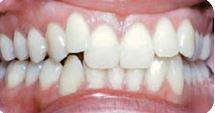 |
 |
 |
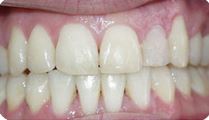 |